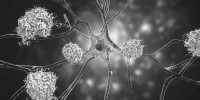
Decoding Alzheimer's Disease
September 21 was World Alzheimer's Day. Therefore, this article delves into the intricate details of Alzheimer's disease, shedding light on its origins, development, and symptoms. We further explore the transformative role of 'omics' technologies in Alzheimer's research and treatment, including proteomics, epigenomics, transcriptomics, and multi-omics.
Development, symptoms, support and the role of multi-omics in understanding and treatment
Alzheimer's disease, a debilitating and progressive neurodegenerative disorder, is the most common form of dementia, accounting for approximately 60-80% of cases worldwide. As populations age, the prevalence of Alzheimer's disease is expected to increase, making it a significant global health concern. Characterized by the gradual loss of memory and cognitive function, the disease erodes the patient's ability to carry out simple daily tasks. For the relatives, this is accompanied by a mental burden.
Origins, Development and Symptoms of Alzheimer's Disease
Alzheimer's disease was first documented by Dr. Alois Alzheimer in 1906. He described the case of a woman suffering from unusual mental symptoms, now recognized as Alzheimer's. The disease typically starts developing in individuals aged 65 and above, although early-onset Alzheimer's can occur in people as young as 40. It is caused by brain protein dysfunction, specifically the accumulation of beta-amyloid plaques and tau tangles, leading to neuronal damage and loss.
Symptoms of Alzheimer's disease gradually emerge and worsen over time. Early signs often include memory loss that disrupts daily living, difficulty in problem-solving, confusion regarding time or place, and changes in mood and personality. As the disease progresses, symptoms may advance to severe memory loss, disorientation, mood swings, and behavioral changes.
Reacting to Alzheimer's Disease: Steps towards Comprehensive Care and Support
Reacting to an Alzheimer's diagnosis can be emotionally and physically challenging for both the patient and their loved ones. The first step is to ensure that a comprehensive care plan is in place. This includes medical care, support services, and legal and financial planning. Regular medical check-ups should be scheduled to monitor the disease's progression and the effectiveness of the treatment plan. At home, creating a safe and supportive environment is crucial. This might involve adapting the living space to the patient's needs and ensuring daily routines are kept consistent to minimize confusion.
Emotional support is equally important. Open communication about the diagnosis with family, friends, and community members can help create a supportive network. Joining support groups can provide access to resources, advice, and emotional support from others going through the same experience.
Moreover, it's essential to focus on maintaining physical health through regular exercise, a balanced diet, and adequate sleep. Cognitive stimulation activities, such as reading, puzzles, and art, can also be beneficial.
Lastly, it's crucial to remember that while Alzheimer's disease is a challenging journey, it's possible to maintain quality of life with the right support and care. Research is continually evolving, and advancements in our understanding of the disease, largely due to multi-omics technologies, promise hope for more effective treatments in the future.
The Role of Proteomics, Epigenomics, and Transcriptomics
With the advent of omics technologies, researchers have gained unprecedented insights into the molecular underpinnings of Alzheimer's disease.
Proteomics, the large-scale study of proteins, has been instrumental in identifying and quantifying proteins and their interactions associated with Alzheimer's, such as beta-amyloid and tau.
Epigenomics, the study of changes in gene activity not caused by alterations in DNA sequences but by biological or environmental conditions, has also played a significant role in Alzheimer's research. Epigenetic modifications, such as DNA methylation and histone modification, have been linked to Alzheimer's disease, suggesting potential therapeutic targets.
Transcriptomics, the study of RNA molecules, including mRNA, rRNA, tRNA, and other non-coding RNA, has provided insights into gene expression patterns in Alzheimer's disease. Changes in the transcriptome can reveal crucial information about disease progression and potential therapeutic targets.
Multi-Omics in Alzheimer's Research and Treatment
The integration of proteomics, epigenomics, and transcriptomics—termed multi-omics—provides a more comprehensive understanding of Alzheimer's disease. Multi-omic approaches allow for the exploration of the interplay between different biological molecules and their role in disease progression.
For example, integrated analysis of the genome, transcriptome, and proteome can help identify key molecular pathways implicated in Alzheimer's, providing a holistic view of disease pathophysiology. This approach can help identify novel biomarkers for early detection and new targets for therapeutic intervention.
Moreover, combining multi-omic data with clinical and neuroimaging data could improve patient stratification, prognosis prediction, and treatment response monitoring. Thus, multi-omics is transforming our understanding of Alzheimer's disease and opening up new avenues for personalized medicine.
Conclusion
Alzheimer's disease continues to pose significant challenges to healthcare systems worldwide. However, the advent of omics technologies has revolutionized our understanding of the disease. Proteomics, epigenomics, transcriptomics, and multi-omics have provided critical insights into the molecular mechanisms of Alzheimer's disease, offering new possibilities for diagnosis and treatment. As we continue to harness the power of these technologies, the hope for more effective therapies and ultimately a cure for Alzheimer's disease becomes more attainable.